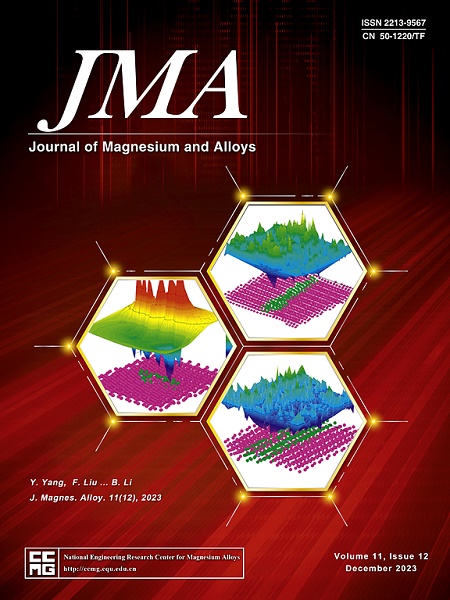Creep properties and fracture behavior of AZ31B extruded sheets with mixed-grain microstructures of different morphologies
IF 15.8
1区 材料科学
Q1 METALLURGY & METALLURGICAL ENGINEERING
引用次数: 0
Abstract
In this work, AZ31B extruded sheets with mixed-grain microstructures were prepared through extrusion. Samples of mixed-grain microstructure with different morphologies were selected from the AZ31B extruded sheets (referred to as M1 and M2 samples, respectively). The creep tests were performed on these samples at the temperature range of 150–200 °C, and the stress level range of 50–100 MPa. The creep properties and fracture behavior of AZ31 extruded sheets with mixed-grain microstructures were studied. Results showed that the creep properties of the M2 sample always outperformed that of the M1 sample and M1 and M2 samples’ creep was dominated by dislocation movement. The creep rate of M2 samples (1.5 × 10-7 ± 1.1 × 10-10 s-1) is an order of magnitude lower than that of M1 samples (4.8 × 10-6 ± 8.1 × 10-10 s-1) at 200 °C under 50 MPa The high activity of basal slip and softening mechanism in the M1 sample significantly accelerated creep, resulting in a relatively high creep rate. Moreover, the stress concentration within the M1 sample caused by deformation incompatibility, increased the initiation and propagation of voids, ultimately leading to fracture and poorer creep performance. However, the numerous <10 µm fine grains surrounding deformed coarse grains in the M2 sample facilitated better coordination of deformation through dislocation slip, effectively slowing down the initiation of voids during the creep process. Meanwhile, the strain was uniformly distributed within each grain, mitigating stress concentration, inhibiting voids propagation, and contributing to the superior creep resistance of the M2 sample.

求助全文
约1分钟内获得全文
求助全文
来源期刊

Journal of Magnesium and Alloys
Engineering-Mechanics of Materials
CiteScore
20.20
自引率
14.80%
发文量
52
审稿时长
59 days
期刊介绍:
The Journal of Magnesium and Alloys serves as a global platform for both theoretical and experimental studies in magnesium science and engineering. It welcomes submissions investigating various scientific and engineering factors impacting the metallurgy, processing, microstructure, properties, and applications of magnesium and alloys. The journal covers all aspects of magnesium and alloy research, including raw materials, alloy casting, extrusion and deformation, corrosion and surface treatment, joining and machining, simulation and modeling, microstructure evolution and mechanical properties, new alloy development, magnesium-based composites, bio-materials and energy materials, applications, and recycling.
 求助内容:
求助内容: 应助结果提醒方式:
应助结果提醒方式:


